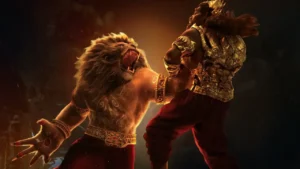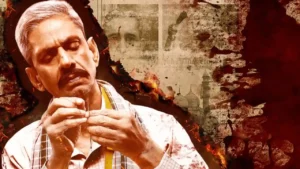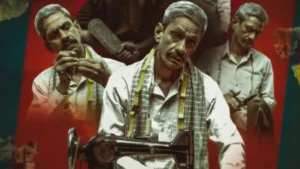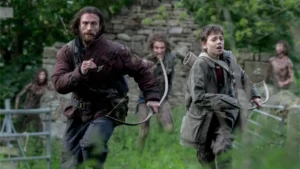Mahavatar Narsimha, directed by Ashwin Kumar and produced by Hombale Films in association with Kleem Productions, marks a bold entry into the world of Indian mythological animation. Based on ancient scriptures such as Vishnu Purana and Bhagavata Purana, the film retells the story of Lord Vishnu’s fierce Narasimha avatar in a stylized animated form aimed at modern audiences.
- Director: Ashwin Kumar
- Cast: Various voice artists…
- Story and Screenplay: Jayapurna Das, Rudra Pratap Ghosh
- Producer: Shilpa Dhawan, Kushal Desai, Chaitanya Desai
- Music: Sam CS
- Editing: Clem Productions
- Where to watch: In theatres
Rating: 3/5
Animation That Dazzles in Divine Moments, But Lacks Consistency
Visually, the film shines during major divine sequences such as the appearance of Narasimha and earlier avatars like Varaha. These scenes are rendered with grandeur and emotional intensity. However, there are inconsistencies in animation quality, with certain character designs appearing stiff or overly Westernized. Crowd scenes and transitional frames often lack the fluidity expected from modern animated cinema.
A Story Rooted in Devotion, Faith, and Mythological Grandeur
At its core, Mahavatar Narsimha is a story about faith and divine justice. It portrays the battle between the tyrant Hiranyakashyap and the devout child Prahlad, culminating in the dramatic arrival of Narasimha. The emotional resonance of the story, especially Prahlad’s unwavering devotion, offers a moral anchor that connects with viewers of all ages.
Moral Themes That Resonate with Today’s Audience
The film explores timeless moral conflicts—pride versus humility, tyranny versus righteousness, disbelief versus devotion. These themes are delivered with clarity and spiritual weight, making the film more than just a mythological re-telling. It speaks to contemporary audiences grappling with similar ethical dilemmas.
Where the Film Falls Short: Pacing, Design and Graphic Violence
While the story’s heart is in the right place, the film suffers from uneven pacing in the middle portions. The narrative slows down after a strong start and some emotional arcs feel rushed. Additionally, the climax includes graphic violence—bloodshed and intense visuals—that may be too strong for young children, despite its mythological context.
Music, Screenplay and Technical Craft: A Mixed Bag
The screenplay by Jayapurna Das and Rudra Pratap Ghosh is sincere and emotionally engaging. Editing by Kleem Productions keeps the film mostly tight, though the mid-section drags. Sam CS’s background score enhances dramatic moments, but the film’s songs interrupt narrative flow and lack lasting impact.
A Universe in the Making: The Beginning of the Dashavatara Saga
Mahavatar Narsimha is designed as the first installment in a decade-long mythological cinematic universe. The producers have already revealed plans to chronicle all ten avatars (Dashavatara) of Lord Vishnu through a series of animated films. If successful, this franchise could redefine devotional content for modern family audiences in India.
Final Verdict: Emotionally Resonant, Technically Ambitious – A Solid Start
Mahavatar Narsimha may not be flawless, but it marks a significant step for Indian animation and mythological cinema. With its devotional heart, mythological depth, and visually ambitious storytelling, it is worth watching—especially for families and spiritual viewers. Its limitations in animation quality and narrative pacing are noticeable, but the emotional power and cultural intent carry the film forward.
Rating: 3 out of 5
Mahavatar Narsimha lays a strong foundation for what could become a landmark mythological animated universe rooted in Indian tradition.











